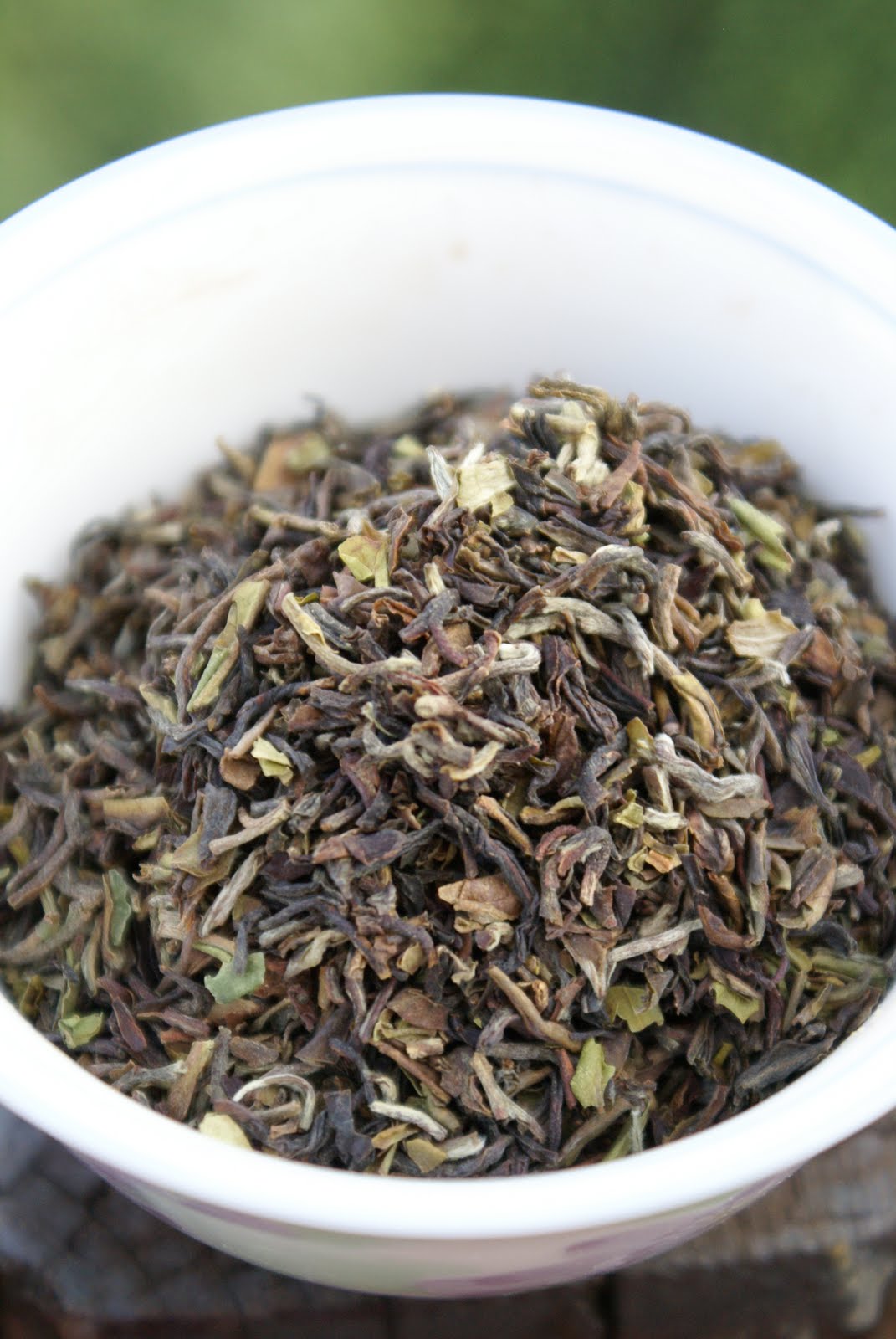2009 Darjeelings (2): Castleton
Posted on 11 November 2009
Castleton is one of the most famous Darjeeling tea gardens and according to a self-description you can read here, is particularly renowned for its intensely aromatic second flush muscatels. The latter found a confirmation in my tasting, with the additional advantage that the two teas tasted here are extremely representative of their flushes and genre. Both teas are sourced from Lochan Tea Ltd.
The 1st Flush FTGFOP1 Special (photo above and below) has small tippy leaves in a wide variety of green and light brown colours: it couldn’t look more 1st flush-typical. The wet leaf shows moderate oxidation and a good leaf selection. The dry leaf aroma is quite herby and earthy and less citrusy than many 1st flush Darjeelings this season.

The tea brews a surprisingly deep colour that shows this straight away to be one of the more structured 1st flushes, excitingly complete, dense and flavourful. But the texture remains light as befits a spring picking and so the assertive tannins that arrive at the end are really let loose. Their flavour is earthy, fully oxidised, less citrusy-bitterish than many 1st flushes. This is really good tea with plenty of personality. (Though on a side note, it seems to have deteriorated a bit since my first brewings in June; retastes this morning alongside the 2nd flush, it is now quite light, less flavourful at mid-palate, and tannins are sharper than before, though very clean).

The 2nd flush FTGFOP1 China Special (wet leaf above and below) is less tippy than the above tea, with a darker, more oxidative leaf appearance (consistent brown colours). The aroma is very intense, mixing chocolatey richness with mild herbiness. The milk chocolate aroma is reminiscent of a Chinese oolong tea from Wuyi.
This is showing classic Castleton character (as I understand it): balanced, stately, even lofty Darjeeling. It isn’t particularly aromatic in the brew and not so very muscatel-driven, but has a sweet fruity (dried fruits), almost honeyed flavour and dense texture at mid-palate that make it very attractive. Oxidation is rather high and the perception of the astringency is different from the above 1st flush: the tea tastes rounder, less drying, and the tannins are more walnuty in flavour than the earthy, woodsy 1st flush. Brewed alongside this ‘China Special’ is more complete and preferable to the 1st flush ‘Special’ (though as mentioned it might have to do with the latter sample’s freshness). It is not a particularly vivid or poised tea but for balance and breadth, is surely in the top league of Darjeeeling. (See Facebook discussion of this tea).







